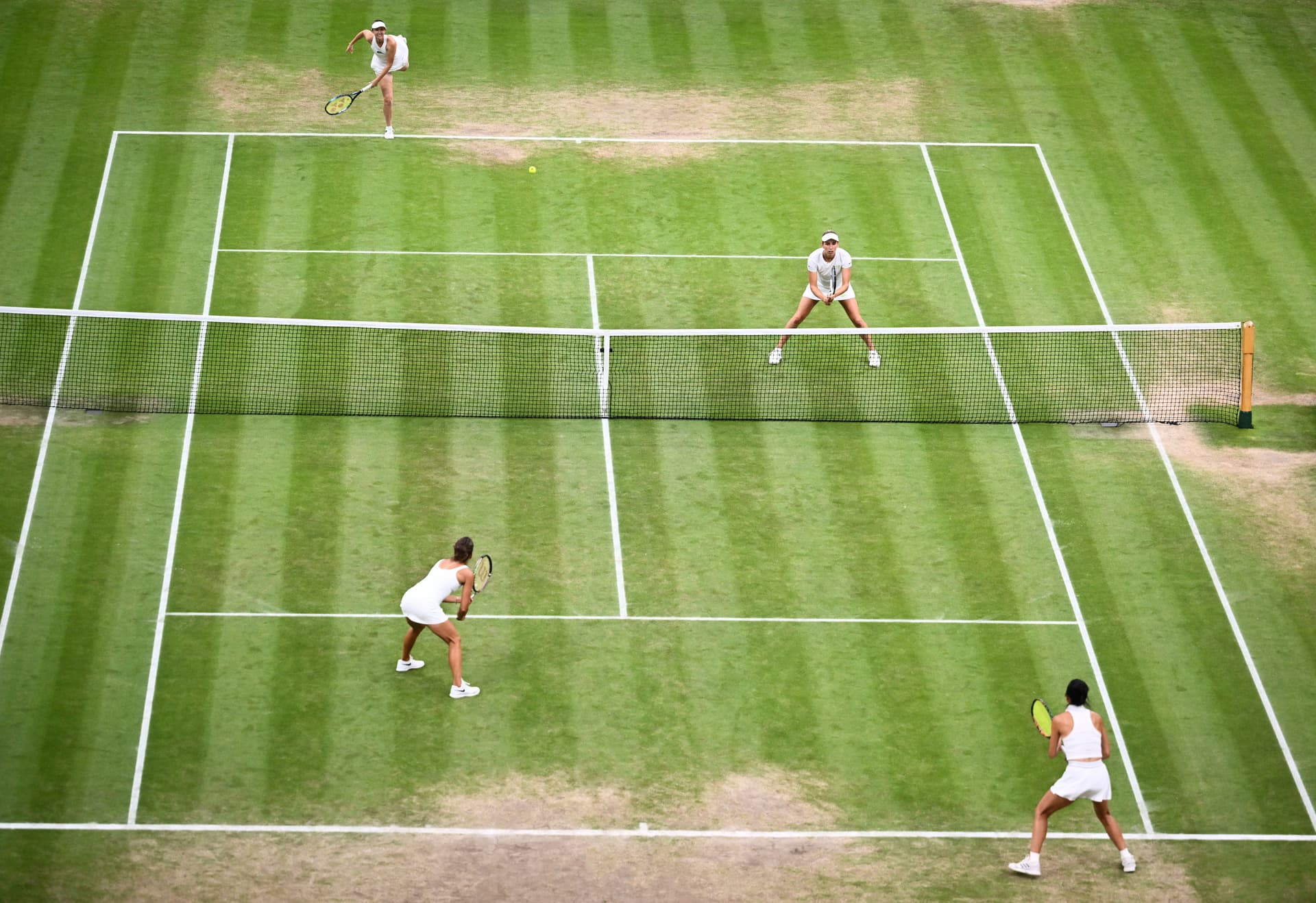Tennis
Doubles Tennis Rules: Serving, Scoring, & Key Guidelines
Doubles tennis in a nutshell, absolutely everything you need to know.

Storm Hunter, Elise Mertens, Hsieh Su-wei and Barbora Strycova//Getty Images
As the name suggests, doubles tennis is effectively the team derivative of the individual game. Each tennis player has a partner while facing off against a pair of opponents. There are of course other factors which distinguish doubles tennis from singles, and we’ll unpack everything you need to know here!
The Tennis Court in a Doubles Tennis Match
The size of the court is a major difference between the single and doubles game. On a standard court, you would notice that there are two lines which run the length of the court on either side. They are referred to as the ‘doubles alleys’.
The space is a little over 1.3 meters wide, and in a doubles matchup considered in-bounds. Given that these ‘alleys’ are on the court during a singles match, but considered out of bounds, the doubles playing area is increased by just under 3 meters in width.
Nevertheless, the area a player would naturally cover in a doubles match would be smaller than a singles match. In doubles, you have four players on the court, and so the intensity and tax on an athletes legs is somewhat lower.
The spelling racket is the typical way to spell the piece of equipment used in net games like tennis. The alternative spelling is racquet. Racquet is more commonly used in sports such as squash and racquetball.
Doubles Tennis Service Rules
Just like in singles tennis, one player serves for an entire game of doubles tennis. They stand behind the baseline and serve the ball into the opposite service box. Upon completion of a successful serve, the point is played according to the usual rules of tennis.
Interestingly, whilst the partners must alternate their serves during the course of a game, they are allowed to switch the order for the next set. That is to say that if on a team of players A and B, if A serves first during the first set, they don’t necessarily have to start the second set.
During the serve, a player’s partner can stand anywhere they want on their teams side of the court. Normally, the partner will stand in their own service box parallel to the side their partner is serving from.
How do the Returners Set Up to Receive a Serve?
While the serving player switches sides on every point, the returning team has to stay on the same side of the court for the duration of a game. Therefore, whilst the server doesn’t change during a game, the opponents essentially alternate turns to receive the serve.
In both singles and doubles tennis, teams switch sides of the net after every odd-numbered game of a set. This changeover occurs with a short break of 90 seconds.
Does Doubles Tennis have Tiebreakers?
The scoring in doubles tennis is exactly the same as in the singles format. Points are captured as 15, 30 and 40. You need to win six games to win a set and usually you need two sets to win a match.
As you may know, tennis matches are played until a player has six games (with the required advantage), but where the set is tied at 6-6 a tiebreaker is triggered. There is no difference in doubles tennis.
A tiebreaker game is first to seven points. The serving format is also slightly different, whereby instead of one player serving for the entire game, during the tiebreaker a player serves first and thereafter they change every two points.
The changeover takes place every six games.
Doubles v Mixed Doubles
Often novice tennis fans are confused by doubles and mixed doubles. Doubles tennis simply refers to a team of players who are the either both male or female. This rule is applied consistently to every team who play in a doubles match or tournament.
Mixed doubles are then where one player is male and the other is female on a team. The rules are exactly the same as doubles. The court dimensions are also consistent with doubles.

Ryan Liberty is an experienced sports writer whose articles have featured in some of the biggest sports publications in South Africa. With a strong understanding of all major sports and an in-depth understanding of betting, Ryan consistently delivers insightful content. He's also known for his ability to break down complex topics into engaging, reader-friendly pieces.